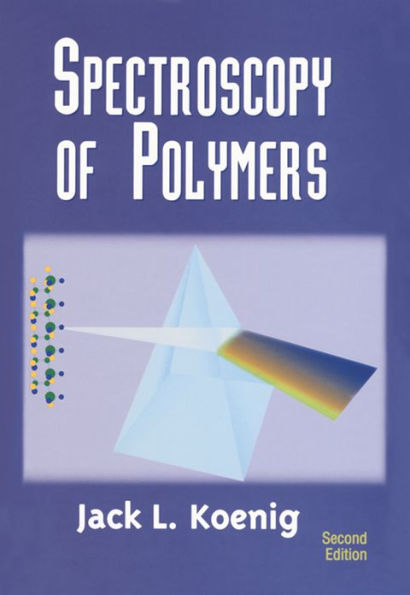Spectroscopy of Polymers
This revised and updated Second Edition of the best-selling reference/text is essential reading for students and scientists who seek a thorough and practical introduction to the field of polymer spectroscopy. Eleven chapters cover the fundamental aspects and experimental applications of the primary spectroscopic methods. The advantages and disadvantages of the various techniques for particular polymer systems are also discussed. The goal of the author is not to make the reader an expert in the field, but rather to provide enough information about the different spectroscopic methods that the reader can determine how the available techniques can be used to solve a particular polymer problem. This Second Edition contains new and updated information on techniques in IR and NMR, as well as an all-new chapter on Mass Spectrometry.
1100463920
Spectroscopy of Polymers
This revised and updated Second Edition of the best-selling reference/text is essential reading for students and scientists who seek a thorough and practical introduction to the field of polymer spectroscopy. Eleven chapters cover the fundamental aspects and experimental applications of the primary spectroscopic methods. The advantages and disadvantages of the various techniques for particular polymer systems are also discussed. The goal of the author is not to make the reader an expert in the field, but rather to provide enough information about the different spectroscopic methods that the reader can determine how the available techniques can be used to solve a particular polymer problem. This Second Edition contains new and updated information on techniques in IR and NMR, as well as an all-new chapter on Mass Spectrometry.
285.0
In Stock
5
1

Spectroscopy of Polymers
491
Spectroscopy of Polymers
491
285.0
In Stock

Product Details
| ISBN-13: | 9780080541570 |
|---|---|
| Publisher: | Elsevier Science |
| Publication date: | 09/16/1999 |
| Sold by: | Barnes & Noble |
| Format: | eBook |
| Pages: | 491 |
| File size: | 12 MB |
| Note: | This product may take a few minutes to download. |
About the Author
From the B&N Reads Blog
